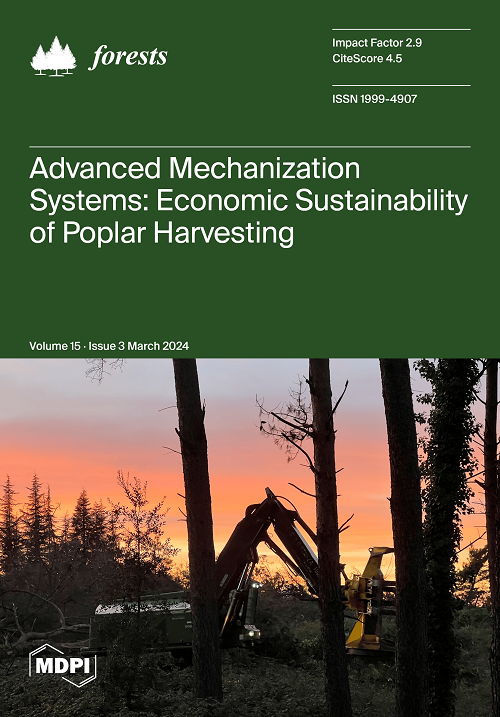量化全叶季节街道绿化对情绪感知的影响:居民福祉指南
IF 2.5
2区 农林科学
Q1 FORESTRY
引用次数: 0
摘要
量化春、夏、秋三季全叶季节街道绿化对情感的影响对于以幸福感为重点的城市建设非常重要。目前的情感感知模型通常侧重于通过对街景图像进行语义分割来识别对象的影响,缺乏解释性。因此,需要能量化街道绿化情感效应的可解释性模型。本研究旨在测量和解释街道绿化对情感的影响,以帮助城市规划者做出决策。这将改善生活环境,培养积极情绪,并帮助居民从消极情绪中恢复过来。在中国杭州,我们使用百度地图 API 获取了植物处于全叶状态时的街景图像。我们使用语义分割技术从街景图像中分离出植物的各个部分,从而计算出绿色景观指数、植物层次多样性、植物色彩丰富度和树空景观因子。我们创建了一个专门用于情感感知的数据集,包括四个不同的类别:愉悦、放松、无聊和焦虑。该数据集通过机器学习算法和人工评估相结合的方式生成。分值从 1 到 5 不等,分值越高表示情绪越强烈,分值越低表示情绪越不强烈。随机森林模型和夏普利相加解释(SHAP)算法被用来识别影响情绪的关键指标。植物层次多样性和绿色景观指数对情绪的影响最大。这些指标与情绪之间存在着错综复杂的非线性关系。具体来说,较高的绿景指数(通常表示街景图像中 200 米范围内有 20-35 棵完全生长的树木)和较高的植物层次多样性会显著促进积极的情绪反应。我们的研究为地方规划部门提供了支持,帮助他们做出以幸福感为重点的城市规划和更新决策。基于我们的研究,我们建议采取以下行动:(1)在绿景指数较低的区域增加可见绿量;(2)种植季节性植物和开花植物,如茶花、银杏和金丝楠木,以增强多样性和色彩;(3)在安全感较低的区域修剪植物,以提高可见度;(4)引入常绿植物,如桂花樟、桂花和松树。本文章由计算机程序翻译,如有差异,请以英文原文为准。
Quantifying the Impact of Street Greening during Full-Leaf Seasons on Emotional Perception: Guidelines for Resident Well-Being
Quantifying the emotional impact of street greening during the full-leaf seasons in spring, summer, and fall is important for well-being-focused urban construction. Current emotional perception models usually focus on the influence of objects identified through semantic segmentation of street view images and lack explanation. Therefore, interpretability models that quantify street greening’s emotional effects are needed. This study aims to measure and explain the influence of street greening on emotions to help urban planners make decisions. This would improve the living environment, foster positive emotions, and help residents recover from negative emotions. In Hangzhou, China, we used the Baidu Map API to obtain street view images when plants were in the full-leaf state. Semantic segmentation was used to separate plant parts from street view images, enabling the calculation of the Green View Index, Plant Level Diversity, Plant Color Richness, and Tree–Sky View Factor. We created a dataset specifically designed for the purpose of emotional perception, including four distinct categories: pleasure, relaxation, boredom, and anxiety. This dataset was generated through a combination of machine learning algorithms and human evaluation. Scores range from 1 to 5, with higher values indicating stronger emotions and lower values indicating less intense ones. The random forest model and Shapley Additive Explanation (SHAP) algorithm were employed to identify the key indicators that affect emotions. Emotions were most affected by the Plant Level Diversity and Green View Index. These indicators and emotions have an intricate non-linear relationship. Specifically, a higher Green View Index (often indicating the presence of 20–35 fully grown trees within a 200 m range in street view images) and a greater Plant Level Diversity significantly promoted positive emotional responses. Our study provided local planning departments with support for well-being-focused urban planning and renewal decisions. Based on our research, we recommend the following actions: (1) increase the amount of visible green in areas with a low Green View Index; (2) plant seasonal and flowering plants like camellia, ginkgo, and goldenrain trees to enhance the diversity and colors; (3) trim plants in areas with low safety perception to improve visibility; (4) introduce evergreen plants like cinnamomum camphor, osmanthus, and pine.
求助全文
通过发布文献求助,成功后即可免费获取论文全文。
去求助
来源期刊

Forests
FORESTRY-
CiteScore
4.40
自引率
17.20%
发文量
1823
审稿时长
19.02 days
期刊介绍:
Forests (ISSN 1999-4907) is an international and cross-disciplinary scholarly journal of forestry and forest ecology. It publishes research papers, short communications and review papers. There is no restriction on the length of the papers. Our aim is to encourage scientists to publish their experimental and theoretical research in as much detail as possible. Full experimental and/or methodical details must be provided for research articles.
 求助内容:
求助内容: 应助结果提醒方式:
应助结果提醒方式:


